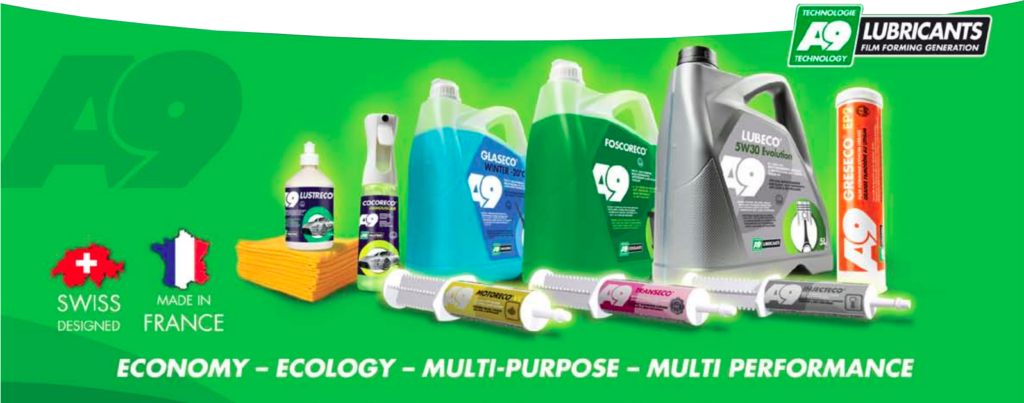This is mineral lubrication from the oil world.
This family consists of a material lubricant to which a certain number of so-called stable additives are added, which, when combined, will ensure the lubrication of all mechanical drive chains available on the international market.
There are so-called monograde formulations, then multigrades, and finally multigrades with low ash content Low Saps).
The global market as a whole obeys these 3 standardized formulations because of the associated manufacturer warranties.
The mechanics are permanently dynamically lubricated allowing all moving mechanical parts to operate metal to metal.
It is necessary to renew the lubricant regularly with a spacing recommended by the manufacturer so that its formulation ensures excellent lubrication and avoids premature wear of the mechanics.
The more additives the mineral process contains, the more its name is ennobled with laudatory terms such as those of semi-synthetic, 100% synthetic or even 100% Low Saps synthetic and the more its duration of use increases as does its price.
This is an additional soluble lubrication method not adopted in conventional standardized lubricants for reasons of instability over time and very diverse molecular origins.
This lubrication consists of modifying the standardized chain of dopes developed by the oil industry with the aim of giving it other properties.
This lubrication had its reason for being when the lubricants available on the market were essentially monograde and contained very little additives.
Furthermore, at the time they were marketed, no control body measured the possible dangerousness of using all of the non-standardized additives, nor the consequences on the environment and the quality of the air.
Nowadays, the usefulness of additional nonstandardized additives is very limited since monograde lubricants are used less and less.
The arrival of standardized multigrade lubricants has had the effect of rendering unnecessary any other form of soluble additive whose performance is ephemeral or even counterproductive.
The sale of these products is based on marketing that is closer to “Gogo Catcher” than scientific, most of the time misleading and we are entitled to wonder why the legislator hardly intervenes to prohibit their marketing.
Unlike the two solutions proposed previously, the latter could change the vision that our fellow citizens have regarding air pollution in urban areas and the quality of CO2 which contributes to climate change.
This recent evolution of modern standardized lubrication born in France in 1988 takes up the conventional standardized lubrication created by the petroleum world by making it film-forming.
Instead of lubricating the mechanics metal against metal as seen previously, standardized film-forming lubrication interposes, through electrostatic energy, a nanotechnology forming a film of 0.1 micron on all the metal masses so that the lubricant will lubricate the mechanics film against film and no longer metal to metal. This is a truly unprecedented technological revolution for mechanics because the persistence of this film with very high resistance to friction will generate unknown and extraordinary performances compared to the 2 other lubrication methods that we have just stated.
Another advantage and not the least, standardized film-forming lubrication retains and protects all the genuine properties of conventional standardized lubricants because it is not soluble but simply miscible in them.
In fact, it does not come into contact in any way with the additives which constitute the standardized process solubilized in the mineral lubricant, retaining all its performances whatever its duration of use recommended by the manufacturer and the oil blender. In addition, standardized film-forming lubrication eliminates premature wear of all mechanisms since it is the residual film deposited which will wear in its place and which will be renewed automatically at each oil change.
No more 70% of mechanical wear during cold starting, no more deposits in the segmentation which are the cause of unequal compression ratios from one cylinder to another and in all lubrication circuits, no more overheating of mechanics insufficiently cooled or caused by sustained speed, finally putting an end to the oxidation and acidity of conventional standardized lubricant.
We can imagine, if it were finally generalized internationally by the major players in the world, that standardized film-forming lubrication could make it possible to maintain current combustion engines because by having modified the Tribology of mechanics, it considerably improves the Stoichiometry thanks to unrivaled liner/piston sealing, and, as a result, a significant reduction in toxic exhaust emissions (CO, Nox, HC, Particles, etc.), a source which seems to forever condemn the use of vehicles with current combustion engines.
Finally, thanks to the residual film put in place from 43°C in any mechanical kinematic chain, the gain on mechanical friction of around 300 rpm for a motor is such that the energy saving as well recovered offers its user tens of additional kilometers before going to the “pump”, regardless of the fuel used (Petrol, Diesel, ethanol, biomass, LPG etc.).
Note that the user can also protect with the same technology the entire mechanical kinematic chain, namely the transmission (mechanical or automatic gearbox, front or rear axle, power steering), the fuel injection circuit, the cooling circuit and the lubrication circuit if the vehicle is equipped with one.
A Complete film-forming range of standardized lubricants, coolants, windscreen washers, lithium greases, mechanical treatments (engine, transmission & fuel injection circuit), valeting products (detergent, body cleaner, plastic renovator shampoo & polish)
www.planet-a9.com
